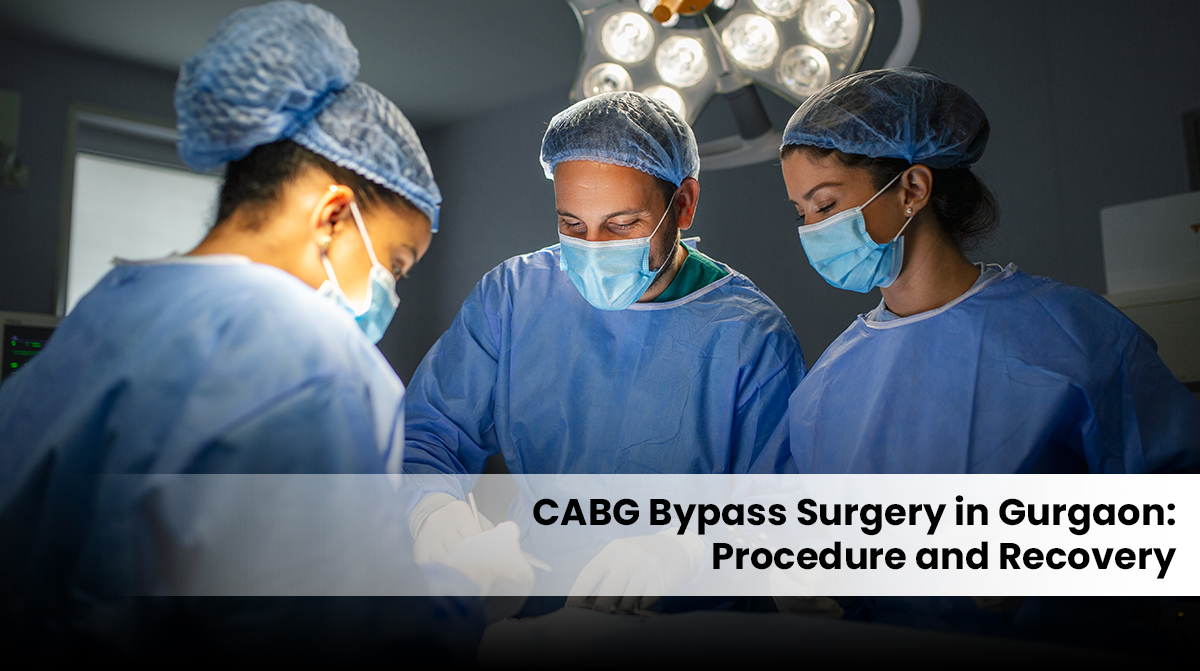
Coronary bypass surgery has become a life-saving operation for serious heart patients. The new surgical method brings hope to millions of patients with coronary artery blockage and decreased heart function. Gurgaon, also claimed to be equipped with the finest medical facilities in the world, is now also a top destination for patients receiving this life-altering operation through world-class medical care and highly qualified cardiac surgeons offering the best care.
Understanding Coronary Artery Bypass Surgery
The coronary artery bypass surgery, also referred to as CABG, is a serious operation that restores blood vessel supply to the heart muscle. It is required when coronary arteries become blocked by the buildup of plaque, which is called coronary artery disease. Part of the process involves bypass of the blood supply by diverting the blood from flowing over the occluded region, utilising good arteries taken from other parts of the patient’s body.
The operation remedies the critical state of ischaemia, where heart muscle tissue receives no oxygenated blood. In critical cases, this results in heart muscle cell death, which has to be arrested immediately. CABG operation patients are typically 66 years of age on average, and about 72% are male. The operation has been extremely successful for coronary heart disease and also for conditions such as angina pectoris and silent myocardial ischaemia.
Artery Bypass Graft Types
Artery bypass graft types are currently divided into arterial and venous conduits, each with its respective strengths. Arterial grafts, especially from the internal thoracic artery, also have better long-term patency than venous grafts. The most popular one is the left internal mammary artery because of its proximity to the heart and better long-term results.
Graft material choice determines success to a large degree in surgery. Internal mammary arteries offer protective agents such as endothelium-derived relaxing factor and prostacyclin that inhibit atherosclerosis and ensure long-term patency of the graft. The right internal mammary artery, radial artery, and gastroepiploic artery could be the alternative arterial options based on the anatomy of the patient and the need for the surgery.
Venous grafts, the great saphenous vein of the leg in the majority of cases, are being utilised more frequently due to their convenience and ready availability. While their rate of patency in the long term is less than that of arterial grafts, they are still an appropriate choice for multi-vessel bypass grafting. The lesser saphenous vein can also be utilised should additional graft material be required.
The Surgical Procedure Explained
The cabg bypass surgery in Gurgaon is done as per international standards and norms. The procedure of the surgery lasts 3 to 6 hours based on the number of clogged arteries to be bypassed. The patient is under general anaesthesia and is hooked up to advanced monitoring systems during the surgery.
In the older ways, a big cut is made across the middle of the chest over the breastbone. The ribcage is cut open to expose the heart. Now the good arteries and veins are removed all at the same time from elsewhere in the body, usually from the arm, chest, or leg. Coordination allows for the best use of operating time and the best outcome for the patient.
All surgeries possess an oxygenating and circulation apparatus called a heart-lung bypass pump or cardiopulmonary bypass pump that simulates the work of the heart and lungs during the operation. The pump perfuses oxygenated blood through the body while the arrested heart is anaesthetised by a so-called “cardioplegic” solution containing potassium when operational. The controlled cardiac arrest gives the surgeons a window of opportunity to work on the static heart with accuracy.
Grafting is achieved by establishing new points of blood supply by anastomosing resected vessels to the coronary arteries past the blockages. Distal anastomoses are built first and then proximal to the aorta. Surgeons inspect each graft carefully for an adequate supply of blood and leakage-free before attempting the next anastomosis.
Advanced Surgical Techniques Available
Gurgaon’s leading heart centres possess a range of new methods of coronary artery bypass grafts. Minimally invasive methods, such as off-pump and robotic-assisted surgery, offer alternatives to open-heart surgery for appropriate patients. These methods can lead to less invasion, faster recovery, and fewer post-surgical complications.
Off-pump coronary artery bypass grafting enables the surgeon to do the surgery with a beating heart using cardiopulmonary bypass. It can be useful in those patients with certain risk factors or poor tolerance of standard bypass surgery.
Totally endoscopic coronary artery bypass is the most advanced minimally invasive technique. A closed-chest procedure retains the normal heart rhythm and does not involve a heart-lung bypass machine. Not everyone, but this surgery has an advantage for the right patients.
Pre-operative Preparation and Assessment
By using extensive pre-operative evaluation, the optimal surgical outcomes are assured for patients undergoing coronary artery bypass grafting. Cardiac surgeons conduct in-depth evaluations in the form of thorough medical histories, physical examinations, and cardiology-based testing. Imaging tests give details about the exact location and extent of blockage of the arteries, facilitating planning for surgery.
They will most likely be offered blood tests, electrocardiograms, echocardiograms, and cardiac catheterisation studies to evaluate heart function and overall health status. This is done in an effort to determine other risk factors and customise the procedure for the individual patient.
Learning plays a significant role during the pre-operative preparation time. Patients and family members receive adequate information about the procedure, its likely results, and healing. This information reduces fear and prepares patients psychologically for the process of surgery.
Conclusion
The recovery after coronary artery bypass grafting is a staged process to attain maximum recovery and normal function. The first few days’ hospitalisation in an intensive care unit are standard, with specialised cardiac care teams monitoring the patients around the clock.
Sophisticated monitoring devices monitor heart rhythm, blood pressure, and other vital functions round-the-clock during these critical days.
The first phase of rehabilitation is cautious control of pain, respiratory rehabilitation, and graduated mobilisation. The patients are hospitalised for approximately one week following the surgery. The medical teams during this time observe for any possible complications and promote healing in the operating area.
The whole rehabilitation course of treatment usually lasts 6 to 12 weeks. The patients gradually improve in medical care in the initial weeks, towards more activity. Walking programmes start on the ward in the hospital and continue at home, with gradual increases in walking distance and duration in association with ongoing healing.

